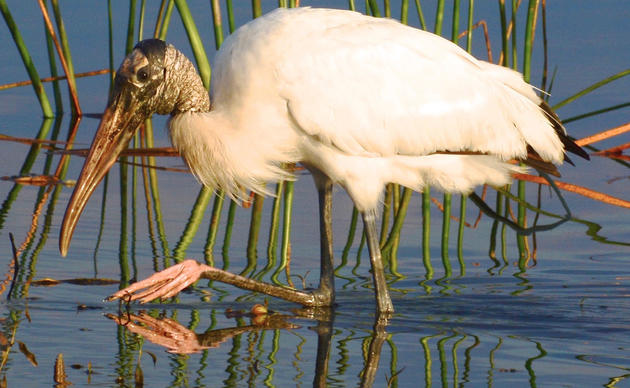Vegetation at the North Lettuce Lake

Q: What is happening at Lettuce Lakes?
A: Prior to spring 2020, the lake surface in front of the benches was dominated by non-native, invasive water lettuce (Pistia stratiotes). After removing much of the water lettuce, the lake was colonized by a dense mix of vegetation which can block the view of alligators, turtles, and fish. The over-drying of the lettuce lakes in the dry season is likely making it easier for many of these rooted plants to colonize and survive in this long-hydroperiod habitat.
Q: Which plant species are currently present?
A: Two of the more visible species that have moved into the lake are frog’s bit (Limnobium spongia) and yellow nutsedge (Cyperus esculentus).
Q: Are these species native or invasive?
A: Frog’s bit is a native plant that can be floating or rooted and occurs in many water types throughout Florida. Yellow nutsedge is grass-like and is the primary plant populating the pond directly in front of the north Lettuce Lake benches. Yellow nutsedge is non-native to Southwest Florida but has not been identified as an invasive species.
Q: Are these plants posing a problem?
A: We don’t believe these plants are negatively affecting our ecosystem at this time. While the dense vegetation makes it harder to see wildlife and can reduce the lake habitat available for some species, Corkscrew Swamp Sanctuary’s 13,450 acres provide ample habitat for wildlife.
Q: Can the Sanctuary do anything to manage these plants?
A: The Sanctuary staff doesn’t typically prioritize managing species that don’t invasively spread. However, as the north lettuce lake in front of the viewing benches is a favorite location for many visitors, we plan to try cutting the nutsedge to create more open water as a pilot initiative and will reassess after our first cut.
Q: How will the Sanctuary manage these plants?
A: Our plan is to use an underwater vegetation groomer to cut yellow nutsedge with an expectation that this will slow its regrowth and allow for more visibly open water. We are hopeful this will be effective in opening wildlife habitat and improving views of north lettuce lake.
How you can help, right now
Donate to Protect Corkscrew's Birds and Wetlands
Make a meaningful and lasting gift to protect Corkscrew Swamp Sanctuary's rare Everglades habitat.
Become a Member
Join an extraordinary and growing community of members dedicated to supporting the conservation of natural ecosystems throughout the Western Everglades.
Sign Up for the Corkscrew eNewsletter
Stay connected to Corkscrew Swamp. Sign up for our monthly online newsletter.




